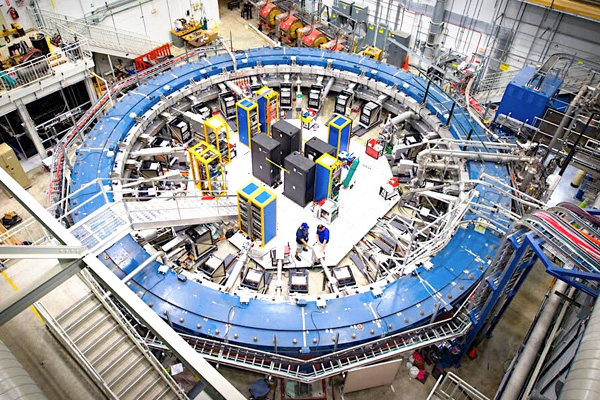WHAT’S LEFT TO BELIEVE? –
April 7, 2021 – In a landmark experiment, scientists have found fresh evidence that a subatomic particle is disobeying one of science’s most watertight theories, the Standard Model of particle physics. The gap between the model’s predictions and the particle’s newly measured behavior hints that the universe may contain unseen particles and forces beyond our current grasp.
In a seminar on Wednesday, researchers with Fermilab in Batavia, Illinois, announced the first results of the Muon g-2 experiment, which since 2018 has measured a particle called the muon, a heavier sibling of the electron that was discovered in the 1930s.
Like electrons, muons have a negative electric charge and a quantum property called spin, which causes the particles to act like tiny, wobbling tops when placed in a magnetic field. The stronger the magnetic field, the faster a muon wobbles.
The Standard Model, developed in the 1970s, is humankind’s best mathematical explanation for how all the particles in the universe behave and predicts the frequency of a muon’s wobbling with extreme precision. But in 2001, the Brookhaven National Laboratory in Upton, New York, found that muons seem to wobble slightly faster than the Standard Model predicts.



